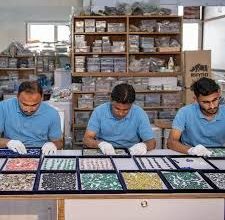Introduction
Carbon black, a versatile and indispensable material, plays a pivotal role in various industries, contributing to the production of tires, inks, coatings, and plastics. This explores the journey of carbon black plastic from feedstock to innovative plastic applications, highlighting its significance in addressing environmental concerns and enhancing product performance.
- Carbon Black: A Crucial Industrial Component
Carbon black, often referred to as “soot,” is a fine powder produced through the incomplete combustion of hydrocarbons. This process yields a substance with high surface area and unique properties, making it a valuable material for a wide range of applications.
- Carbon Black in the Rubber Industry
One of the primary applications of carbon black is in the rubber industry. It is a key component in tire manufacturing, enhancing the mechanical properties of rubber compounds. The addition of carbon black improves the durability, strength, and wear resistance of tires, ensuring optimal performance on various road surfaces.
- Inks and Coatings
Carbon black is also extensively used in the production of inks and coatings. Its excellent UV absorption properties and high tinting strength make it an ideal choice for creating dark and vivid pigments. Additionally, its ability to disperse well in different mediums ensures uniform coloration in various printing and coating applications.
- Carbon Black Feedstock: A Closer Look
The production of carbon black involves the use of feedstock, which primarily consists of hydrocarbons derived from fossil fuels. Understanding the carbon black feedstock is crucial in comprehending the environmental impact and sustainability of carbon black production.
- Hydrocarbons as Feedstock
Commonly used feedstocks for carbon black production include natural gas, crude oil, and coal tar. Natural gas has gained prominence due to its cleaner combustion process, producing fewer by-products compared to other sources. This shift towards cleaner feedstock aligns with the global push for sustainable and environmentally friendly industrial practices.
- Environmental Considerations
While carbon black is an essential component in many industries, its production has been associated with environmental concerns. The combustion process not only releases carbon dioxide but also contributes to air pollution. Efforts are being made to adopt cleaner technologies, such as catalytic processes, to mitigate the environmental impact of carbon black production.
III. Carbon Black Solutions: Innovations and Sustainability
In recent years, the carbon black industry has witnessed significant innovations aimed at addressing environmental challenges and improving overall sustainability. These solutions are reshaping the landscape of carbon black production, paving the way for a more environmentally friendly future.
- Sustainable Production Techniques
Researchers and manufacturers are exploring sustainable production techniques to minimize the environmental footprint of carbon black. Green carbon black, produced from biomass or waste materials, is emerging as a promising alternative. By utilizing renewable resources, this approach reduces reliance on traditional feedstocks and lowers carbon emissions.
- Circular Economy Initiatives
The concept of a circular economy is gaining traction in the carbon black industry. Efforts are underway to establish closed-loop systems that promote the recycling of carbon black from end-of-life products. This not only reduces the demand for new carbon black production but also contributes to resource conservation and waste reduction.
- Reinforcing Plastic Polymers:
Carbon black is added to plastic polymers to reinforce their mechanical properties. The incorporation of carbon black particles improves the tensile strength, modulus, and impact resistance of plastic materials. This makes carbon black-infused plastics suitable for a wide range of industrial applications, including automotive components and construction materials.
Conclusion
The evolution of carbon black from a conventional industrial component to a sustainable and innovative material reflects the dynamic nature of the manufacturing industry. As research and development continue to drive advancements in carbon black solutions, the future holds promising prospects for environmentally friendly production methods and expanded applications in various sectors. By embracing these innovations, industries can not only enhance their product performance but also contribute to a more sustainable and eco-friendly future.




